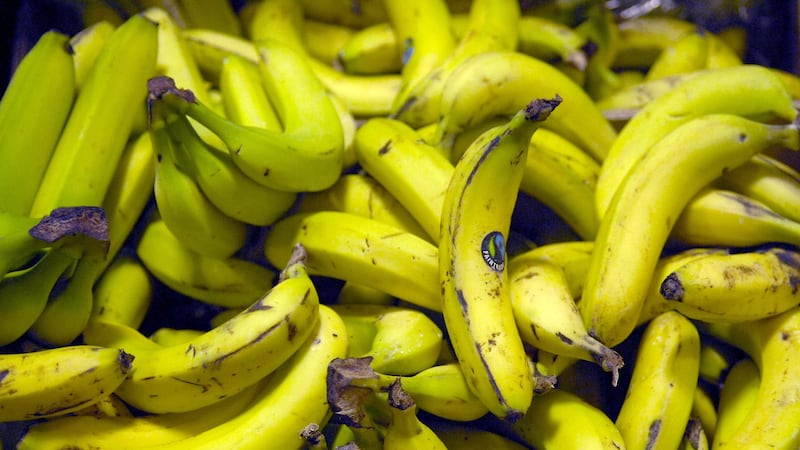
Last week there were rumours of a unionist realignment between the DUP and the UUP with Sir Jeffrey Donaldson noting that the north was no longer dearg, bán agus gorm - red, white and blue.
It remains to be seen what form that will take. It might just amount to a comhaontú toghcháin - an electoral pact or is Sir Jeffrey attempting to steer the DUP to a cur chuige níos liobrálaí - a more liberal approach, modh oibre níos pragmataí - a more pragmatic course of action?
Neosfaidh an aimsir - time will tell.
And if the DUP/UUP were to become a single, liberal unionist party, would that mean they would be less antagonistic to the Irish language? Or are we in the realms of fantasy?
Well, unionism wasn’t always antagonistic towards the language, according to Peter Collins.
Did you know that the slabhra oifige - chain of office of the Lord Mayor of Belfast?
Or on the bunchloch - the foundation stone of what is now the Royal Victoria Hospital and on the arches of St George’s Market?
Even political unionism used Irish. On 12 July 1867, fir bhuí - Orangemen marching from Bangor to Newtownards, in defiance of the law and led by William Johnson, were greeted with Céad Míle Fáilte. The entrance to the great anti-Home Rule convention in Botanic Gardens, Belfast in 1892 bore the motto ‘Erin go Bragh (nowadays we could say Éire go Brách – Ireland Forever) beside Loyalist slogans.
At the same time, 1893 to be precise, Conradh na Gaeilge - the Gaelic League was founded by Douglas Hyde, the son of a rector from Roscommon, and a Catholic Glensman, Eoin Mac Néill, to halt the decline in Irish.
The League first attracted a new generation in Ulster, many of whom were Protestants.
The first branch in the city grew out of the language classes of the Belfast Naturalists’ Field Club.
The first president of the League in Belfast was a Presbyterian Orangeman, Dr St Clair Boyd.
Dr R.R. Kane, who as Máistir Lóiste - Master of a Lodge is said to have signed its minutes in Irish, supported the League, as did the Grand Master of the Independent Orange Order, Lindsay Crawford.
Francis Joseph Bigger, the Presbyterian dlíodóir - lawyer and ársaitheoir - antiquarian, became patron of the Belfast regional executive.
His house, ‘Ardrigh,’ on the Antrim Road in Belfast, was a great meeting-place for those involved in the Gaelic revival. Here would gather, among many others, the novelist George A. Birmingham (Canon Hannay) a member of the League Executive; the Henry brothers, Paul an t-ealaíontóir - the artist and Robert, an t-ollamh in Ollscoil na Ríona - the Queen’s professor, who persuaded the University to resume Irish in 1909; the journalist Robert Lynd; Alice Milligan, the poet from Omagh and her friend and fellow editor of the Shan Van Vocht, Anna Johnston (Ethna Carbery).
So a new unionist entity that could be supportive of the Irish language is not a pipe dream.
Read more at Aspects of a Shared Herigage

